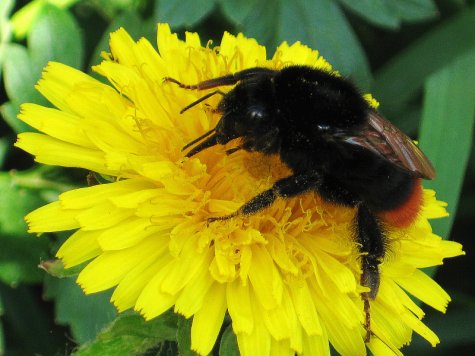Year of the Bumblebees
2014
Why are bumblebees important?
Text: Eneli Viik
Photo: Evelii Viik
Translation: Liis
Red-tailed bumblebee
Red-tailed bumblebee Kivikimalane Bombus
The importance of bumblebees lies in the fact that they offer us ”pollination services”:
88% of the pollination of flowering plants (angiosperms) is carried out by animals, in our area mainly insects. The most important of these are bees (honeybees, bumblebees and solitary bees) that help to carry out the pollination of wild as well as cultivated plants;
84% of the crops grown in Europe need insect pollination;
30% of the food consumed by a person is obtained thanks to the pollinators;
In 2005 the estimated economic value of insect pollination in Europe was 22 thousand million Euros (22 milliards) and in the world 153 thousand million Euros annually;
The nutritional value of insect pollinated cultivated plants is very high. For instance they contain more than 90% of the C vitamins in all food
Bumblebee pollinated cultures are: clover, alfalfa (Medicago), vetches, broad bean, rape, turnip rape, flax, sunflower, blackcurrant, gooseberry, carrot, strawberry, raspberry, tomato, cucumber, cherry, plum, apple, carrot, radish, swedes, turnips, onion, beetroot …
Pollinator species differ from each other with respect to build as well as food preferences – because of this only one species cannot carry out the pollination of all plants. A variety of pollinators is needed. Among bumblebees for instance the species with long mouth parts are very important because they are able to pollinate even flowers with long petal tubes (such as red clover, broad bean) – honeybees cannot manage this because of their short mouth parts.
Join the "Meie kimalased – Our bumblebees” group on Facebook: LINK ,
and share images of bumblebees in your garden with other enthusiasts!









